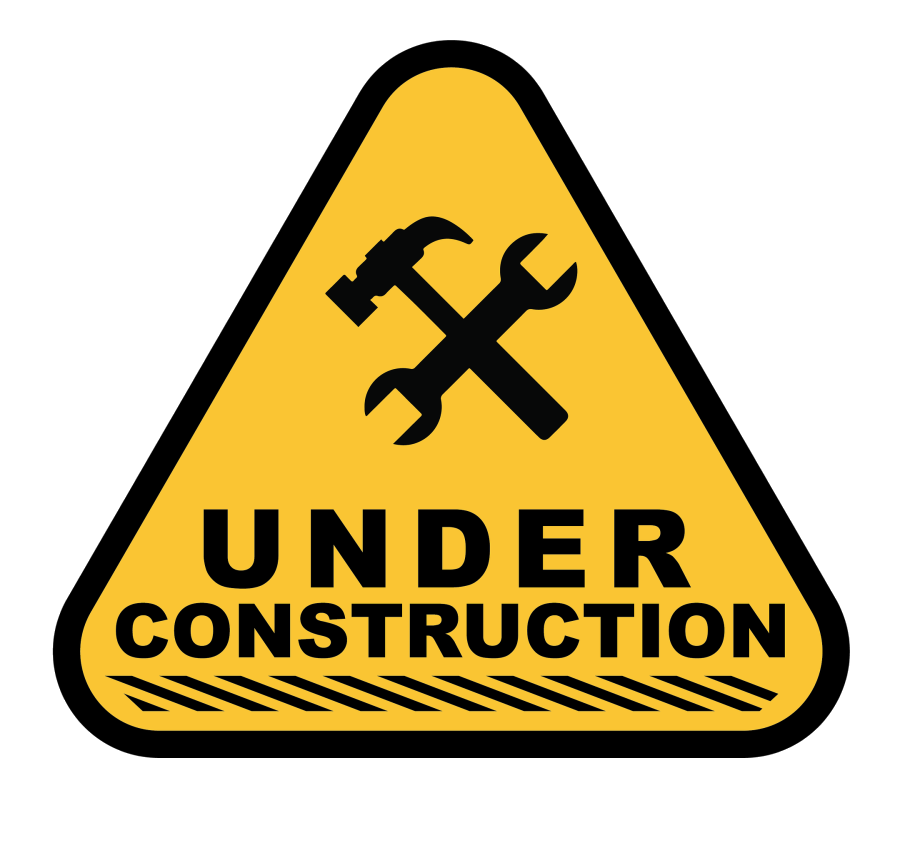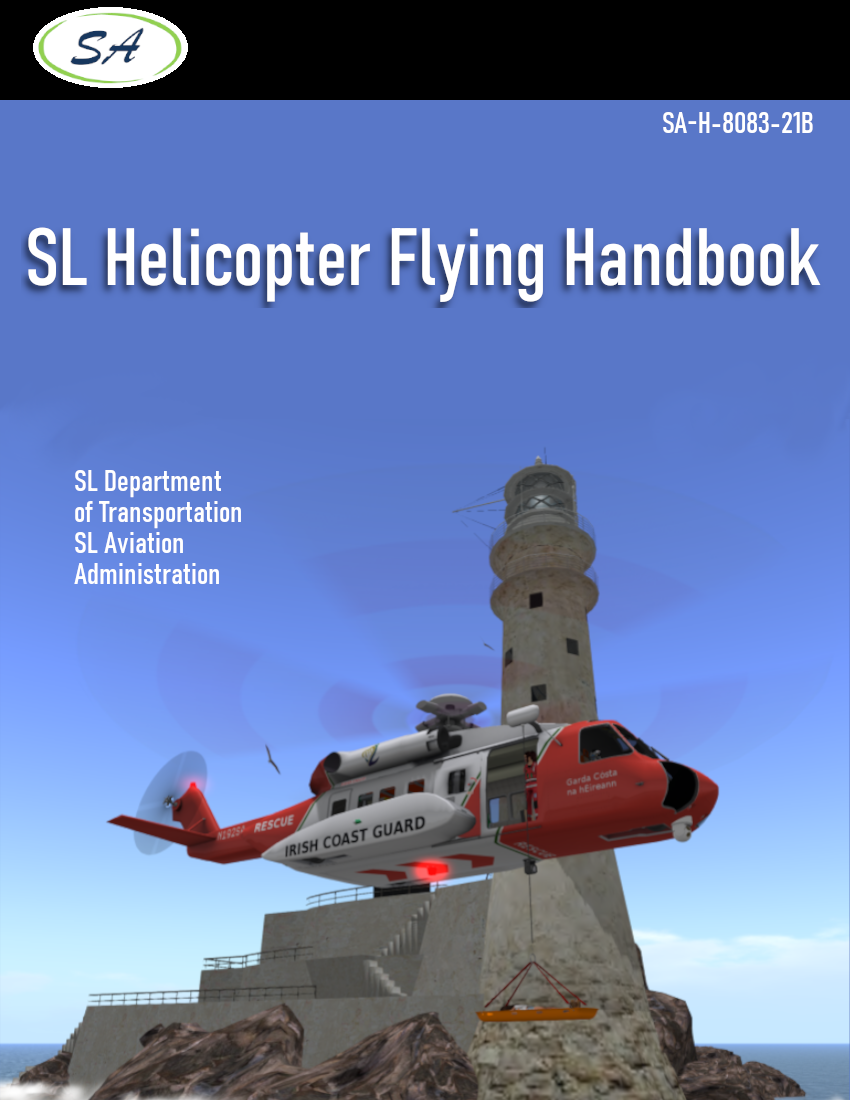|
|
| (126 intermediate revisions by the same user not shown) |
| Line 1: |
Line 1: |
| − | = Aerodynamics = | + | [[File:Sl-hfh-cover.png|right|250px|link=SL_Helicopter_Flying_Handbook]] |
| − | TBD
| |
| | | | |
| − | = Helicopter Flight Characteristics =
| + | This handbook is intended to introduce the fundamentals of helicopter flying for the SL pilot. While the majority of the information presented here applies to flying Shergood helicopters in SL, much of the information applies to RL helicopter flight as well. |
| | | | |
| − | === TORQUE ===
| + | [[File:Under-contruction.png|128px]]UNDER CONTRUCTION - Not all sections are complete. |
| | | | |
| − | In single main rotor helicopters, torque is produced by the main rotor whenever the helicopter is under power. In most aircraft, the main rotor turns counter-clockwise when viewed from above, resulting in the body of the helicopter having a tenancy to turn clockwise (to the right) the more power you use. As a result, the pilot must apply right pedal to compensate. This is particularly evident when pulling collective to lift into a hover which requires the most amount of power. Conversely, right pedal must be applied when reducing power/collective. A few aircraft (e.g., Russian and French) have main rotors that turn clockwise when viewed from above. In these aircraft, the effect is reversed and left pedal is needed to compensate as collective is increased.
| + | <h1>Master Contents</h1> |
| | | | |
| − | In aircraft with tandem rotors such as the Chinook, or in aircraft with coaxial rotors such as the Hiller UH-4, the rotors are counter-rotating and thus torque is canceled.
| + | <div style="font-size: 130%;"> |
| − | | + | {| |
| − | === GROUND EFFECT === | + | |style="width: 50%; vertical-align: text-top;"| |
| − | Proximity to the ground (land, water, or over a prim) reduces the amount of power needed to hover. The effect increased the closer your are to the surface, and diminishes as you increase height over the surface. Hovering near a surface is referred to as an IGE (In Ground Effect) hover, and hovering away from a surface is referred to as an OGE (Out of Ground Effect) hover. A helicopter can maintain an IGE hover at higher weights and altitudes than it can an OGE hover. At some loadings and altitudes, you may not be able to maintain an OGE hover at all.
| + | # [[SL Helicopter Flying Handbook/Introduction to the Helicopter|Introduction to the Helicopter]] |
| − | | + | # [[SL Helicopter Flying Handbook/Aerodynamics|Aerodynamics]] |
| − | === TRANSLATIONAL LIFT ===
| + | # [[SL Helicopter Flying Handbook/Helicopter Flight Controls|Helicopter Flight Controls]] |
| − | When a helicopter is in a hover or at a low speed, airflow through the disk is at a right angle to the rotor plane, and the rotors must provide all induced airflow through the rotors. As airspeed is increased, some of the induced flow through the rotors begins to be provided by the forward speed of the helicopter. The net result of this is increased lift at no additional cost in power. The largest increase occurs at around 10 to 20 mph and is referred to as ETL (Effective Translational Lift). As an helicopter passes through ETL, it requires significantly less power to maintain altitude, and more power is available for climbs. This is also the reason that less power is required in cruise flight than for hovering. It is also part of the reason that a normal takeoff involves a short ground run to accelerate past ETL before climbing out.
| + | # [[SL Helicopter Flying Handbook/Helicopter Systems|Helicopter Systems]][[File:Under-contruction.png|28px]] |
| − | | + | # [[SL Helicopter Flying Handbook/Weight and Balance|Weight and Balance]][[File:Under-contruction.png|28px]] |
| − | === TRANSLATING TENDENCY ===
| + | # [[SL Helicopter Flying Handbook/Helicopter Performance|Helicopter Performance]][[File:Under-contruction.png|28px]] |
| − | The primary purpose of tail rotor is to counteract torque from the main rotors. However, a side effect of this is a slight sidewards force that would push the helicopter to the right if left uncorrected. This is referred to as "translating tendency". To compensate for this, the controls on the helicopter have been rigged so that there is a slight left tilt of the main rotor when the cyclic controls are centered. This left force from the main rotor balances the right force from the tail rotor. A side effect of this is that the left skid will hang slightly lower then the right one in a hover.
| + | |style="width: 50%; vertical-align: text-top;"| |
| − | | + | #<li value="7"> [[SL Helicopter Flying Handbook/Ground Procedures and Flight Preparations|Ground Procedures and Flight Preparations]] |
| − | === VORTEX RING STATE ===
| + | # [[SL Helicopter Flying Handbook/Basic Flight Maneuvers|Basic Flight Maneuvers]] |
| − | Vortex ring state, sometimes called "settling with power", is a dangerous condition that can occur when a helicopter is descending into its own downwash. Essentially a vortex ring system engulfs the rotors and they fail to produce lift. Once in vortex ring state, increases in power in an attempt to slow the descent will only make the condition worse, thus actually increasing the descent rate. If the condition is allowed to develop too far, or you are too close to the ground, it may be impossible to recover. You are at danger for vortex ring state when all three of the the following conditions hold:
| + | # [[SL Helicopter Flying Handbook/Advanced Flight Maneuvers|Advanced Flight Maneuvers]] |
| − | | + | # [[SL Helicopter Flying Handbook/Helicopter Emergencies and Hazards|Helicopter Emergencies and Hazards]] |
| − | # Descent rate greater than 300 feet/minute | + | # [[SL Helicopter Flying Handbook/Navigation|Navigation]][[File:Under-contruction.png|28px]] |
| − | # Airspeed less than 30 mph | + | # [[SL Helicopter Flying Handbook/Weather|Weather]] |
| − | # More than 50% power | + | |} |
| − | | + | </div> |
| − | If you have alerts turned on, your helicopter will alert you when you are in vortex ring state. To recover from vortex ring state, you should lower the collective and apply forward cyclic to regain airspeed. However, the best practice is to avoid it in the first place.
| |
 UNDER CONTRUCTION - Not all sections are complete.
UNDER CONTRUCTION - Not all sections are complete.
